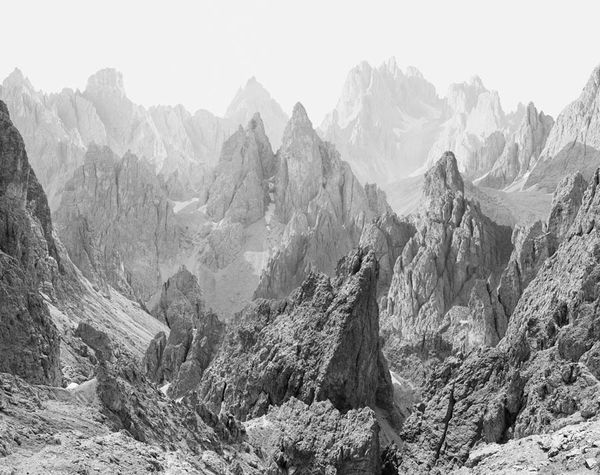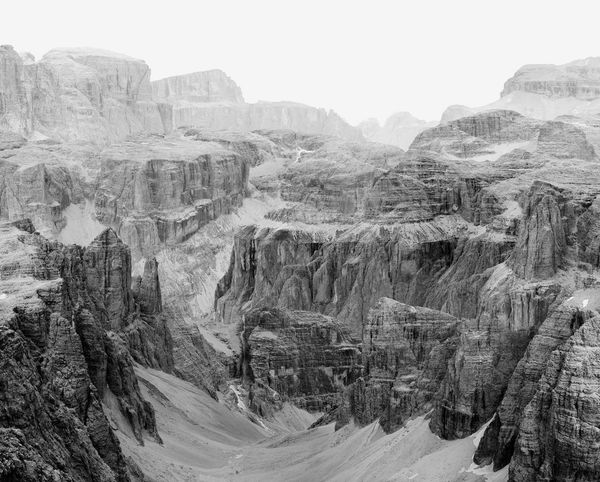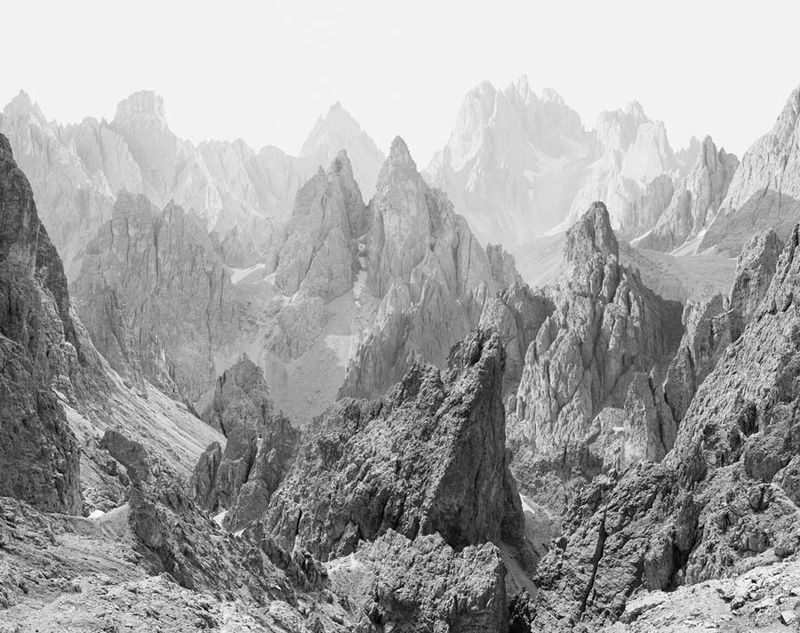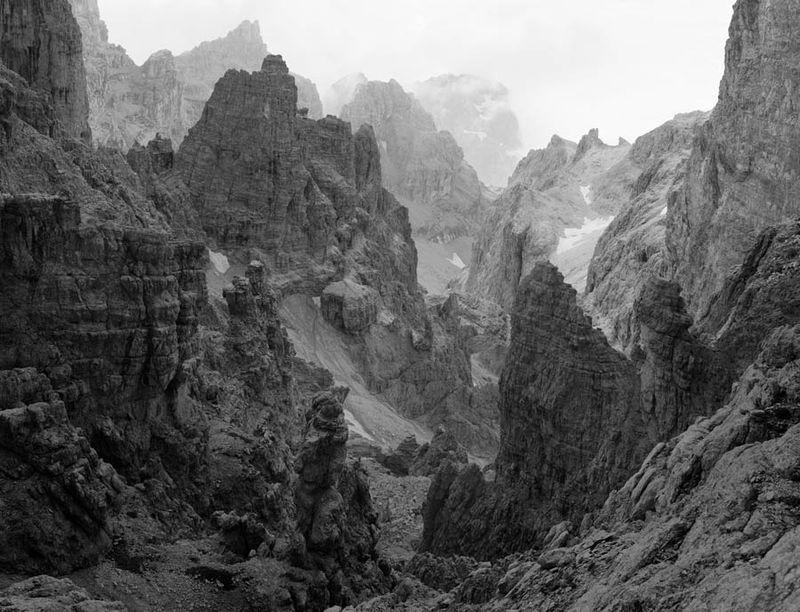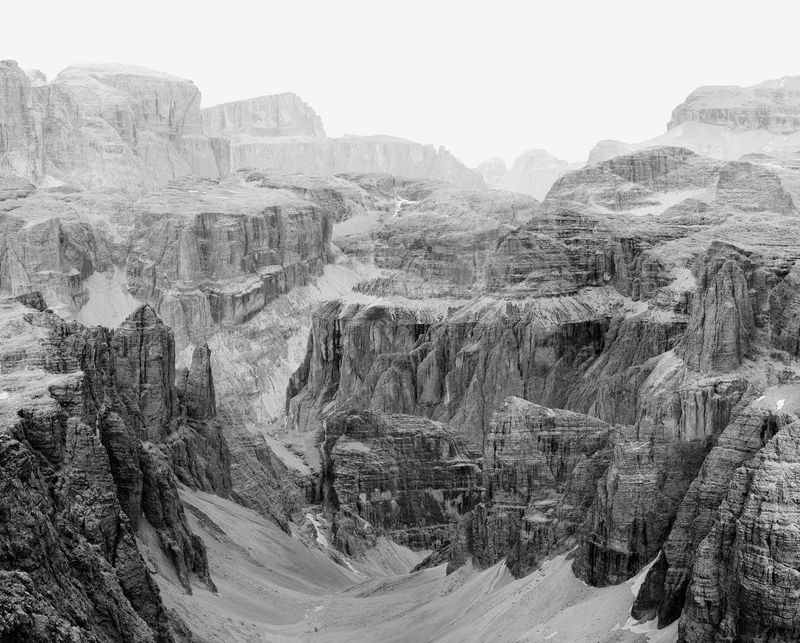Re-imagining the Sublime Landscape
-
Published1 Feb 2017
-
Author
"I seek to recreate an imaginary landscape, almost perfect, where the repetition and accumulation of the elements creates in the viewer a disturbing sensation." Argentinian photographer, Fernando Maselli explores the aesthetic status of the sublime.
"I seek to recreate an imaginary landscape, almost perfect, where the repetition and accumulation of the elements creates in the viewer a disturbing sensation." Argentinian photographer, Fernando Maselli explores the aesthetic status of the sublime.
Through the concept of the sublime, Argentine photographer Fernando Maselli explores the qualities of immensity, infinity, emptiness, and loneliness. In the vastness of large mountains around the world, he questions the awareness and weakness of our presence in the universe.
Maselli is clearly influenced by the notions of philosophical thinkers, and continues to question the pragmatic thoughts of Edmund Burke, who defined what he considered to be sublime in his book, A Philosophical Enquiry Into The Origin Of Our Ideas Of The Sublime And Beautiful. Artificial Infinite reflects upon one’s fragility through a collection of constructed images.
What drew you to work on the topic of the sublime through images of mountains?
The landscape has always been present in my work from the beginning, but I began to work more on this topic in my previous project called Hierophanies. Some of the locations that I had to capture for this project took me to the mountains where I discovered my interest in these landscapes and everything that involves the ascent of a mountain, with its physical and psychic preparation. Then I began to document the mountain landscape in art, looking at its different representations throughout history - this led me to the concept of the sublime, which is an aesthetic category described as a controlled fear that draws the soul. It expresses, ultimately, feelings of pain, distress or fear, that join with the awareness of our smallness and weakness in front of the immensity and the chaos.
In this sense, my project Artificial Infinite deals with steep mountain ranges where semi-darkness, profusion, depth and height come together as the visual achievement of what we may call “the terrifying sublime” - an idea that causes a vortex that disrupts the illusion of security of our everyday regulated and orderly existence. The works included in this series are not constituted by shots taken directly from reality, but instead, they offer landscapes that were recreated through a complex photographic staging, where I highlight, through different techniques such as, fragmentation, repetition, proliferation and superposition, the magnificence of the mountain.
Through this series, are you looking to question reality and construction? Why did you think photography was the visual medium to represent what you call the “the terrifying sublime”?
The terrifying sublime is a concept widely used in romanticism and was studied at that time by philosophers like Immanuel Kant and Edmund Burke. I was particularly influenced by Burke’s book, A Philosophical Enquiry Into The Origin Of Our Ideas Of The Sublime And Beautiful - in it, he pragmatically examines certain physical aspects of nature and its effects on the mind.
I used some of these ideas to develop my own investigation into the sublime; for instance, the darkness and immensity, but more specifically an attribute that Burke called 'artificial infinite' - the succession and uniformity of the fractions. In other words, an element that is repeated many times in a constant and uninterrupted configuration generates in the viewer a sense of infinity.
I find interesting the re-interpretation of all Romantic ideas about the sublime, and therefore, I translated them into a contemporary language such as photography. Manipulated photographs always create some ambiguity. Traditionally photography is associated with the representation of reality: when we see a photograph we tend to assume that that moment has existed, and more so if it’s a blank and white image that brings us back to documentary. With this project, I constantly play with this limit. I seek to recreate an imaginary landscape, almost perfect, where the repetition and accumulation of the elements creates in the viewer a disturbing sensation.
Through this series I find myself reflecting upon the relationship between mankind and nature. What are your thoughts on that?
Our relationship with nature has changed throughout our history, and the concept of "landscape" is a social construction that has developed relatively recently in our society. During the Renaissance, and since the Middle Ages, nature was considered as something inhospitable, full of dangers where there was nothing to contemplate. St. Augustine faithfully manifested the sentiment of that time, asserting that nature should not be admired to find the truth and the divine beauty, all that was inside each one.
On the other hand, in the age of the Renaissance, nature begins to be a controlled element and mankind begins to enjoy it, and in this new relationship the concept of landscape is created. Throughout Romanticism, what gives nature the character of landscape is the projection of the feelings of each one in it. In this project, I was interested in recovering the notion of landscape understood in Romanticism, especially the sublime landscape. Now, we have lost that contact with nature, and practically we do not see it as dangerous, in fact, almost every place in the world has already been explored and is accessible. I am interested in recovering that feeling of beauty and danger that was often associated with remote and inaccessible landscapes.
When you embark on your hikes to photograph the mountains, how long do you spend there? Do you go back to the same location? Did you acquire any special training in order to access to these locations?
When I embarked on this project, I found it important to experience the feeling of the sublime in all its greatness: the man alone in front of nature. So I decided that I had to do these expeditions by myself. Build shelters on the peaks, hike and feel the risk. To do this, I had to take mountaineering courses and train for several months to get to these high mountains - I felt that it was important to work on the concept of the sublime in a virgin and difficult to access landscape. During these trips, I spent several days in the mountain sheltering, with the idea of portraying the same massive mountainous from all angles and at different times of the day, and then reassemble all those pieces in these imaginary compositions that you see.
Where are all the mountains you have photographed located?
For this project I undertook excursions to the Alps, Pyrenees, Picos de Europa, Patagonia, the Canary Islands and Israel.
Clearly you are inspired by painting, but what are your photographic influences?
My greatest influence has always been the school of Dusseldorf, which is considered by many as the fathers of contemporary photography, among them I am very interested in the work of Axel Hütte, Andrés Gursky, Thomas Struth and Thomas Ruff. Other photographers who have inspired me are Thomas Joshua Cooper and Hiroshi Sugimoto.
What was your photographic medium for this series?
For this series I have used large format and medium format cameras, and with them I have photographed all the material needed for my compositions. This project, you could say, is divided into two parts. First, the ascents to the mountains where I collected all the necessary material, and second in my studio recomposing those images.
--------------
To learn more about Artificial Infinite, visit Fernando's PHmuseum profile.
--------------
Born in Buenos Aires in 1978, Fernando Maselli studied Fine Arts and later moved to Madrid where he continued his artistic training. His work has won numerous awards including the SPD - Society of Publication Designers (New York), the W-CA Contemporary Landscape Photography Open (UK), and the Youth Arts Award from the Complutense University (Spain). His work has been shown in the Copenhagen Photo Festival (Denmark), NordArt 2014 (Germany), the 15th China International Photographic Art Exhibition, and the International Biennial of Photography Fotonoviembre (Spain). Maselli has also exhibited extensively in museums, art galleries and international art fairs across Mexico and Spain.
